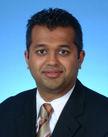 Selene Parekh, MD, MBA, is an associate professor of orthopedics at Duke University in Durham, N.C. Dr. Parekh practices at North Carolina Orthopaedic Clinic with Duke Orthopaedics. He also serves as an adjunct faculty member in the Fuqua School of Business at Duke University. He earned his medical degree from Boston University. He completed his internship, residency and fellowship in foot and ankle surgery at the Hospital of the University of Pennsylvania in Philadelphia.
Selene Parekh, MD, MBA, is an associate professor of orthopedics at Duke University in Durham, N.C. Dr. Parekh practices at North Carolina Orthopaedic Clinic with Duke Orthopaedics. He also serves as an adjunct faculty member in the Fuqua School of Business at Duke University. He earned his medical degree from Boston University. He completed his internship, residency and fellowship in foot and ankle surgery at the Hospital of the University of Pennsylvania in Philadelphia.
Here he discusses how he established a non-profit organization that brings together foot and ankle surgeons in India, how orthopedic surgeons can become involved in international charity care and the next generation of ankle replacement.
Q: What attracted you to the field of orthopedics?
Dr. Selene Parekh: Growing up, I had a passion for sports and surgery. I played competitive sports throughout my childhood and teenage years. In college, I began to look for a surgical specialty that would allow me to pursue these two interests. Orthopaedic surgery was a perfect fit. As I began to learn and experience specialties within orthopedics, I realized that foot and ankle surgery allows for a large breadth of clinical cases, from ankle to toes to ankle replacement, from tendon work to arthroscopy and sports cases.
Q: Why did you decide to establish the Parekh Indo-US Foot and Ankle Meeting?
SP: In 2007, I was invited to the Indian Orthopaedic Association meeting. While there, I came to learn more about the practice of orthopedics in India. I realized that in a country such as India, with a population of over one billion people, the surgical techniques for foot and ankle surgery were arcane. Much of foot and ankle surgery is performed by general orthopedic surgeon. Although these individuals are performing cutting edge arthroscopic surgeries and adult reconstructive surgeries, most of the scope of foot and ankle surgeries has been limited to foot and ankle trauma and external fixation work. The reconstruction and tendon pathologies have been largely ignored.
The Parekh Family Foundation is a U.S.-based non-profit organization. One of the missions of this organization is to increase the awareness and education of foot and ankle pathologies, decision analysis and surgical techniques in India. As such, January 16 to 18, 2010 our first annual Parekh US-Indo Foot and Ankle Surgery Course was held in Mumbai, India. This course was a fantastic success and made us realize the importance of this education module. The 2011 course was held in Coimbatore, the 2012 meeting was held in Delhi and the 2013 meeting in Kolkata. All were equally successful, with approximately 150 to 200 surgeons attending each of the meetings. The 2014 course will take place from January 17 to 19, 2014. This meeting will be held in Jaipur, India.
The course brings together the expertise of four U.S. and one European foot and ankle faculty members with the experience of three to four Indian foot and ankle surgeons. Live, charitable surgical demonstrations, over 60 lectures, sawbones and difficult cases are conducted and discussed over the three day meeting. Through this course, we hope to foster education and camaraderie amongst the practicing orthopedic surgeons in India, the residents in training and the fellows.
Q: What are some of the biggest challenges of practicing internationally?
SP: Charity care on an international basis is fairly easy to conduct once you are able to find a vehicle to do so. One of the biggest issues is making sure you follow local laws and check to make sure that you do not need a temporary medical license for the charity care. Furthermore, developing a network of healthcare providers in the recipient country is important to facilitate your efforts and maximize your time while in the foreign country.
Q: What do you think has been the most significant research advancement in foot and ankle surgery since you first began to practice?
SP: The most exciting aspect of foot and ankle surgery over the past five years has been the new generation of ankle replacements. This generation of ankle replacements has changed the way we are treating ankle arthritis and allows patients to have an option that maintains motion.
Q: What advice do you have for orthopedic surgeons seeking to become involved in global care?
SP: With technology, the world is now smaller than ever. It has been tremendously rewarding to see and feel the appreciation of patients who otherwise would have their condition neglected or ignored. This is what medicine is about . . . making a difference. This is why I wanted to become a surgeon!
A series of articles featuring orthopedic surgeons on issues ranging from personal background to current research developments is published weekly. We invite all orthopedic surgeons and sports medicine specialists to participate.
If you are interested please email cpallardy@beckershealthcare.com.
More Articles on Sports Medicine:
Dr. Andrew Seltzer Returns From Medical Mission Trip
Evidence-Based Medicine & the Next Frontier in Orthopedics: Q&A With Dr. David Dines of Hospital for Special Surgery
Building a Strong Sports Medicine Program & Online Presence From Scratch: Q&A With Dr. David Geir of MUSC Sports Medicine Program


